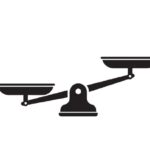Periodontal care and maintenance are essential for maintaining healthy gums and preventing gum disease. Dental professionals use a variety of tools for periodontal care, including:
- Periodontal probe: A slender instrument used to measure pocket depths around teeth, assess gum health, and detect signs of inflammation.
- Scaler: A tool with a sharp, curved edge designed for removing plaque and tartar from tooth surfaces and below the gum line.
- Curette: A similar instrument to a scaler, but with a rounded tip for cleaning root surfaces and treating periodontal pockets.
- Ultrasonic scaler: A powered device that uses high-frequency vibrations to remove plaque and tartar deposits more efficiently.
- Gingival retractor: A tool used to gently pull back the gums for better access during deep cleaning procedures.
Proper periodontal care can help prevent the development of gum disease, which is vital for maintaining overall oral health.
Tools for Dental Implant Procedures and Prosthetics
Dental implant procedures and prosthetics require specialized tools for precise and accurate placement. Some essential tools include:
- Implant drill: A high-speed, precision drill used to create a hole in the jawbone for implant placement.
- Implant drivers: Tools used to insert and tighten dental implants into the prepared site.
- Implant wrench: A specialized wrench designed to apply the correct torque when tightening dental implants.
- Abutment holder: A tool that securely holds the abutment during placement and connection to the implant.
- Impression copings: Components used to make an accurate impression of the implant position for the creation of a custom prosthetic.
Dental implant tools must be precise and of high quality to ensure successful implant procedures and long-lasting prosthetic restorations.
The Use of Dental Tools in Pediatric Dentistry
Pediatric dentistry focuses on the oral health of children, from infancy through adolescence. Dental tools used in pediatric dentistry may be modified for smaller mouths or designed to be more engaging and less intimidating for young patients. Key tools include:
- Pediatric dental mirror: A smaller-sized dental mirror for improved visibility and access in children’s mouths.
- Pediatric forceps: Scaled-down extraction forceps designed for removing primary teeth.
- Pediatric scaler and curette: Smaller-sized scaling and curetting tools for cleaning and treating children’s teeth and gums.
- Rubber dam: A barrier used to isolate a tooth during procedures, protecting the child’s airway and making treatment more comfortable.
- Pediatric syringe: A smaller, more child-friendly anesthesia syringe designed to minimize discomfort during local anesthetic administration.
Using appropriate dental tools in pediatric dentistry is crucial for providing effective treatment and promoting positive dental experiences for children.
The Importance of Proper Dental Tool Sterilization
Proper dental tool sterilization is essential for maintaining a safe and hygienic dental practice. Sterilization prevents the spread of infections and diseases between patients and dental professionals. Key steps in the sterilization process include:
- Cleaning: Thoroughly cleaning dental tools with an ultrasonic cleaner or a manual scrub to remove debris and contaminants.
- Disinfection: Soaking tools in a chemical disinfectant to kill remaining microorganisms.
- Sterilization: Using an autoclave, which uses high-pressure steam to eliminate any remaining bacteria, viruses, and spores.
- Storage: Storing sterilized tools in sealed pouches or containers to maintain their cleanliness until use.
By adhering to proper sterilization protocols, dental professionals can ensure the safety of their patients and















